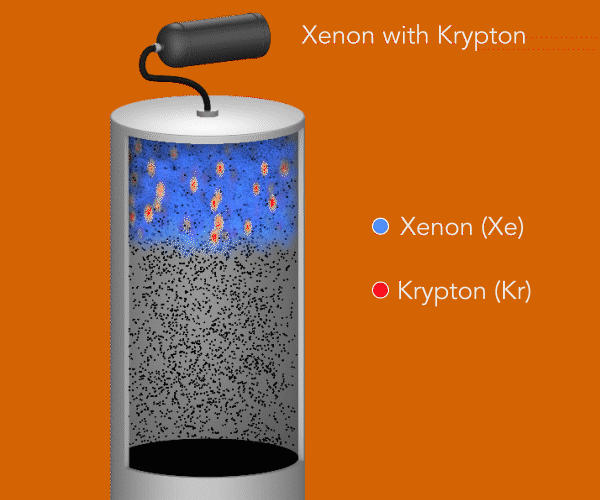
Animation
This animation shows how krypton (red) is removed from xenon gas (blue) by flowing the combined gases through a column...

Detectors help enable science at many SLAC facilities and research programs, particularly in the fields of X-ray science, particle physics, and astrophysics.
Related link:
New technologies

